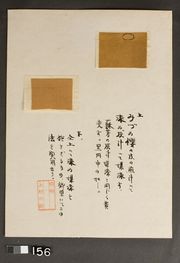Difference between revisions of "Cherry dye"
Jump to navigation
Jump to search
| Line 16: | Line 16: | ||
''Prunus serotina'' (black cherry); ''Prunus virginiana'' (choke cherry); ''Prunus pennsylvanica'' (red cherry); ''Prunus pumila'' (sand cherry); colorante alla ciliegia (It.) | ''Prunus serotina'' (black cherry); ''Prunus virginiana'' (choke cherry); ''Prunus pennsylvanica'' (red cherry); ''Prunus pumila'' (sand cherry); colorante alla ciliegia (It.) | ||
| − | == | + | ==Resources and Citations== |
* R.J. Adrosko, ''Natural Dyes in the United States'', Smithsonian Institution Press, Washington, DC, 1968 | * R.J. Adrosko, ''Natural Dyes in the United States'', Smithsonian Institution Press, Washington, DC, 1968 | ||
Revision as of 12:05, 28 May 2022
Description
Red fruit obtained from over forty types of cherry trees have been used as to make dyes. Examples are :
- Black cherry (Prunus serotina): gives purple, blue and red colors
- Choke cherry (Prunus virginiana): dark red fruit gives a bright red dye
- Red cherry (Prunus pennsylvanica): fruit (red) and bark (brown) are used for dyes.
- Sand cherry (Prunus pumila):
- See also [Uemera Dye Archive (Mizume)]
Synonyms and Related Terms
Prunus serotina (black cherry); Prunus virginiana (choke cherry); Prunus pennsylvanica (red cherry); Prunus pumila (sand cherry); colorante alla ciliegia (It.)
Resources and Citations
- R.J. Adrosko, Natural Dyes in the United States, Smithsonian Institution Press, Washington, DC, 1968
- Wikipedia: http://en.wikipedia.org/wiki/Prunus (Accessed Dec. 9, 2005)
